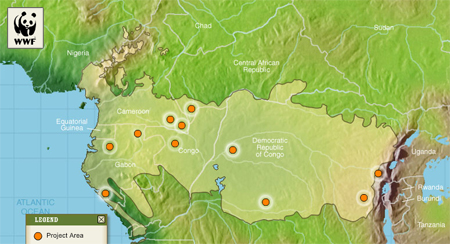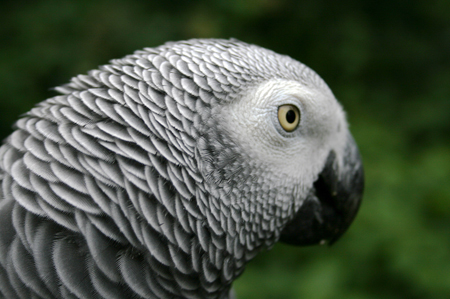
Map of WWF projects in the Congo Basin
Credit: WWF (full interactive map)
This week leaders from Congo Basin countries teamed up with conservation groups to press for more international effort and funding to help protect the Congo Basin, which, like the Canadian Boreal, is one of the last intact forests of the world. You might recall a post I did last month about a conservation success story in the Peruvian Amazon. In fact all three of these forested regions are members of an elite global family--I call them the Family of Five. Scattered across the world these incredible siblings--the Canadian Boreal, Congo Basin, Amazon, Siberian Boreal, and Indonesia/New Guinea are the world's last large blocks of unfragmented and still intact forests.

Family of Five
Credit: Canadian Geographic
While my particular focus is the Canadian Boreal Forest, I watch, hope for, support, and applaud large scale conservation efforts in all the Family of Five.
One of the major conservation groups behind this push in the Congo is World Wildlife Fund, a large-scale conservation group that has fought for years to protect vital wilderness around the globe. This particular effort in the Congo Basin was vastly enhanced when the first Congo Basin Forest Forum and Congressional Hearing was held 10 years ago. Since then, the effort has shown some impressive results. Here are some bullets from their press release, which you can also see in full by clicking here:
- 34 protected areas, 61 community based natural resource management areas, and 34 extractive resource zones have been zoned for conservation management, covering 126 million acres (51 million hectares) or more than a third of the Congo Basin forests.
- More than 11.5 million acres of forest have been certified as sustainably harvested by the Forest Stewardship Council (FSC).
Over 5,000 local men and women have been trained in conservation, land use planning and related conservation capacities. - Although logging and forest degradation remain serious problems, the overall rate of deforestation in the Congo Basin is estimated to be a relatively low 0.17% -- a third of that of Brazil and a 10th of that of Indonesia.
- Indicators for the survival of some endangered species are also improving. Despite years of conflict and poaching, the population of mountain gorillas in Virunga, between the Democratic Republic of Congo, Rwanda and Uganda, is up 17% over a previous census taken 20 years ago.
- Studies of landscapes and wildlife have improved conservation planning, exemplified by the discovery of 125,000 previously unknown western lowland gorillas in Northern Congo.
These accomplishments give hope to all of who care about the world we live in. In addition to hosting over 400 species of mammal, around 1000 species of bird can be seen in the Congo Basin. This includes the iconic African Grey Parrot, which is considered to be one of the smartest birds in the world. Also like the Boreal, the Basin is a major storehouse for carbon, adding to the need for protection.

African Grey Parrot
Taken from Wikimedia Commons
This effort was also highlighted by the New York Times blog, Dot Earth:
http://dotearth.blogs.nytimes.com/2009/09/30/congo-forests-in-climate-context/

